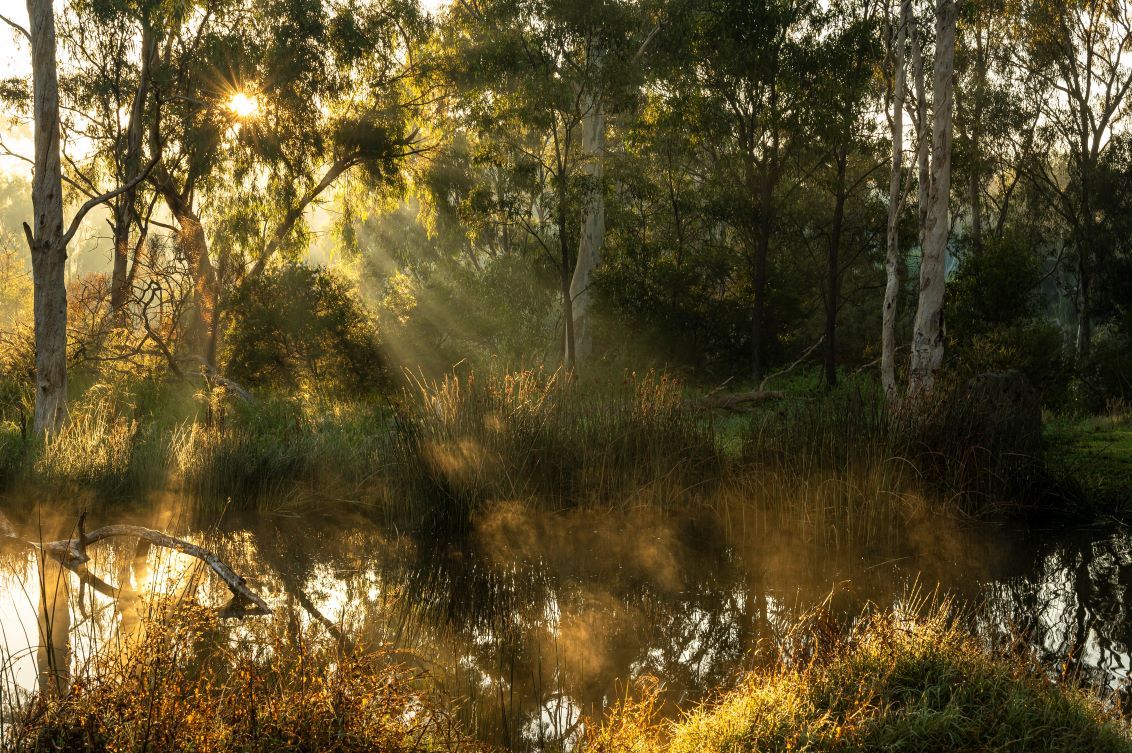Home/Curriculum resources/Billabongs/Activity - Life cycles
Learning Area:
Science
Year levels:
Level 3, Level 4
Suggested timing:
Three lessons. Lessons 1 & 2: student research and group work; Lesson 3: student presentations and class discussion.
Required resources:
Internet access or resources to support research, Laptop and projector, Printed or projected seasonal calendars

Activity - Life cycles
This activity is a part of the Billabongs resource.
Sunlight through Trees, Alphington, Wurundjeri country. Tiffany Garvie. Source: Ngarrngga. © Tiffany Garvie 2023. Used under licence
Students will work in collaborative groups to investigate the life cycle of an organism.
Step by step guide
Step 1: Explore Indigenous life around a billabong
Explore with students' Indigenous life around a billabong. This resource may provide some ideas to help you with this https://www.youtube.com/watch?v=_xaIX5tgRLc.
Students could use the note-taking, note-making document while viewing Through Our Eyes - Gilgais and Caring for Water with June Barker.
Step 2: Overview of the research task life cycles
Students will work in small collaborative groups (3-4) to construct a life cycle for a living organism. This can be a plant or animal that is water dependent from an insect up to birds and mammals. Identify when is breeding season and when they hatch or are born.
Students are encouraged to consider how changes in weather conditions, food sources and other environmental changes such as risk of fire and predators might affect the organism. This can be linked to traditional knowledge displayed in the Indigenous seasonal calendars (available from https://www.csiro.au/en/research/indigenous-science/Indigenous-knowledge/Calendars or http://www.bom.gov.au/iwk/). These can be used by the teacher as a tool to engage the students and describe the task.
Step 3: Process students may undertake
Students can identify the organism that they wish to research from the seasonal calendar used or identify an organism of local significance to research (e.g. Insects, Dragonflies, Platypus, Fish, Pelicans, Muttonbirds, Cockatoos, Gum trees, Lomandra, etc.).
Students can be divided into groups of 3-4 and provided with research tools to find information about the life cycle of the chosen organism. Students can use internet research tools (for example https://www.natgeokids.com/au) or teachers can provide students with encyclopedias or fact sheets. Each group could have a different organism.
In their groups, students read the fact sheet or research the information to construct a labelled diagram of the life cycle of the organism. The life cycle could be recorded in their notebooks. Students may then work together to prepare a presentation of the life cycle to the class in a creative way (write a poem, tell a story from the organism’s perspective, write a diary etc.)
Stage 4: Present research
Students present their life cycle to the class in their chosen way.
The teacher can facilitate a discussion highlighting the similarities and differences between the life cycles using the Inquiry-based questions provided in the other resource activity.
Construct a Venn diagram or data chart on the whiteboard to identify what bird, insect, mammal, fish, reptile life cycles have in common and how they differ.